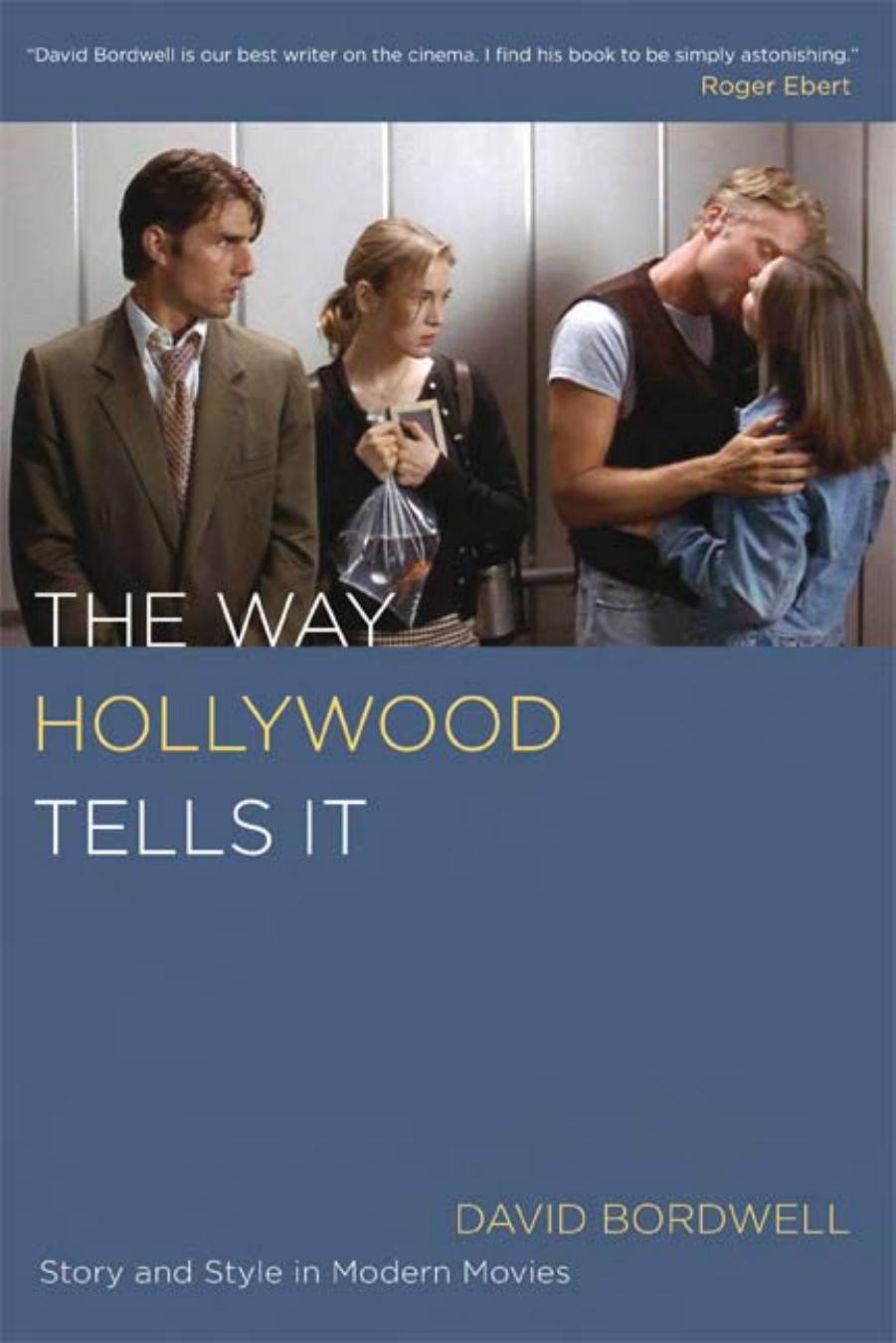The Way Hollywood Tells It: Story and Style in Modern Movies by David Bordwell

Author:David Bordwell
Language: eng
Format: mobi, pdf
Tags: Performing Arts, Film, General
ISBN: 9780520246225
Publisher: University of California Press
Published: 2006-04-09T21:00:00+00:00
2. some likely sources
Iâve drawn most of my evidence about intensified continuity from regularities in the films and comments by practitioners, but critics have also noticed these norms. In 1980 Richard Jameson observed that an overwrought style had become evident in the previous decade.51 Two years later, Noël Carroll pointed to a tendency toward âstrident stylizationâ since the mid-1960s.52 Iâve already mentioned the criticsâ sense that movies are cut faster nowadays, with Todd McCarthy of Variety harping on the drawbacks of the style: âGladiator, with its fast flurries of action and jump cuts, emphasizes the ferocious speed and urgency of every move in the arena, to the slight detriment of spatial unity and action continuity.â53 Of The Bourne Supremacy (2004), McCarthy writes: âOne has to imagine that the lack of clarity, continuity and coherence in this furiously fought sequence is intentional,â but he worries about the directorâs tendency to give action scenes âbreathless bluster, insistent showiness and defiant disorientation.â54 Although McCarthy speaks from a powerful pulpit, nobody seems to have been converted. Intensified continuity is taken for granted in handbooks and film-school curricula. Daniel Arijonâs Grammar of the Film Language (1976), a manual that professional directors sometimes consult in planning a scene, compiles many of the emerging staging and cutting schemas.55 Later manuals incorporate instructions on sidewinding camera movements.56 During a 1985 class at NYU, a professor advised a student to âcapture the energyâ of a pinball game with tracking shots: âGive the camera a life and energy as well.â57
Films themselves sometimes comment on the style. We get parodic versions of it in the bombastic crane shot down to the chairman of the board in Soapdish (1991) or in the entirety of the short George Lucas in Love (1999). When characters discuss recent movies, prototypes of intensified continuity may appear on the agenda. The most celebrated example is the flamboyant long take that opens Altmanâs The Player (1992), during which characters argue about... flamboyant long takes. (âThe pictures they make these days are all MTV. Cut-cut-cut-cut.â) In Swingers (1994), the protagonists comment on the Copacabana shot in GoodFellas; later in the film a pastiche of that shot trails them through a kitchen and into a club. During the same scene, they praise the slow-motion shot of walking heist men in Reservoir Dogs (1992), and that shot is copied immediately, showing them strutting off to a party. To top things off, the menâs conversation is filmed in arcing tracking shots around them sitting at a table, as in the diner opening of Reservoir Dogs. One character remarks, âEverybody steals from everybody. Thatâs movies.â
These passages from Swingers remind us that U.S. âindependentâ films
Download
The Way Hollywood Tells It: Story and Style in Modern Movies by David Bordwell.pdf
This site does not store any files on its server. We only index and link to content provided by other sites. Please contact the content providers to delete copyright contents if any and email us, we'll remove relevant links or contents immediately.
The Kite Runner by Khaled Hosseini(5088)
Gerald's Game by Stephen King(4584)
Dialogue by Robert McKee(4326)
The Perils of Being Moderately Famous by Soha Ali Khan(4171)
The 101 Dalmatians by Dodie Smith(3455)
Story: Substance, Structure, Style and the Principles of Screenwriting by Robert McKee(3399)
The Pixar Touch by David A. Price(3369)
Confessions of a Video Vixen by Karrine Steffans(3247)
How Music Works by David Byrne(3191)
Fantastic Beasts: The Crimes of Grindelwald by J. K. Rowling(2996)
Harry Potter 4 - Harry Potter and The Goblet of Fire by J.K.Rowling(2993)
Slugfest by Reed Tucker(2946)
The Mental Game of Writing: How to Overcome Obstacles, Stay Creative and Productive, and Free Your Mind for Success by James Scott Bell(2847)
4 - Harry Potter and the Goblet of Fire by J.K. Rowling(2657)
Screenplay: The Foundations of Screenwriting by Syd Field(2576)
The Complete H. P. Lovecraft Reader by H.P. Lovecraft(2514)
Scandals of Classic Hollywood: Sex, Deviance, and Drama from the Golden Age of American Cinema by Anne Helen Petersen(2467)
Wildflower by Drew Barrymore(2447)
Robin by Dave Itzkoff(2387)
